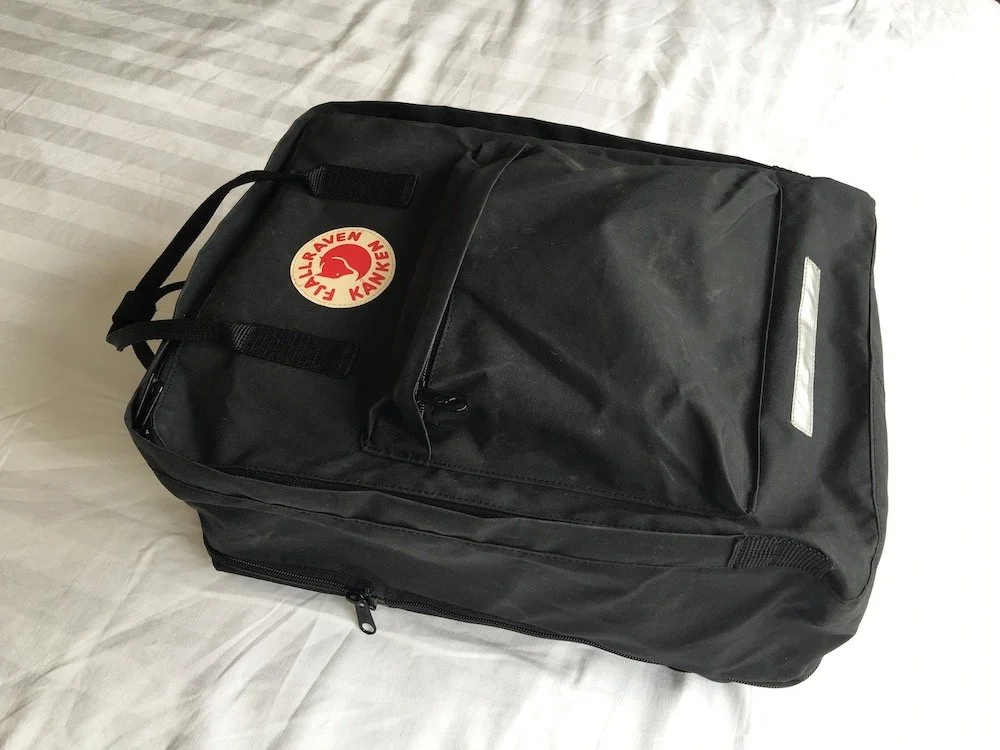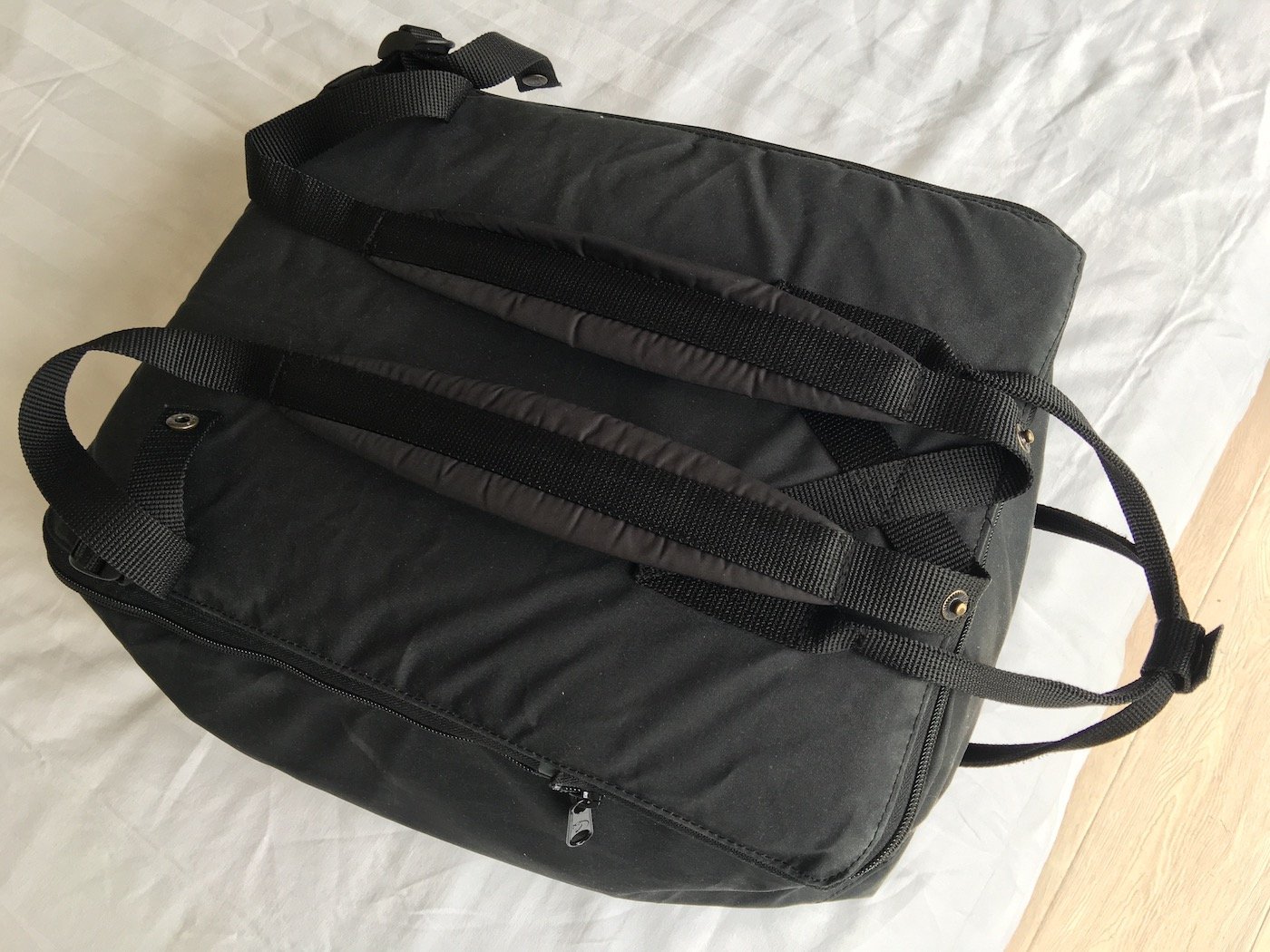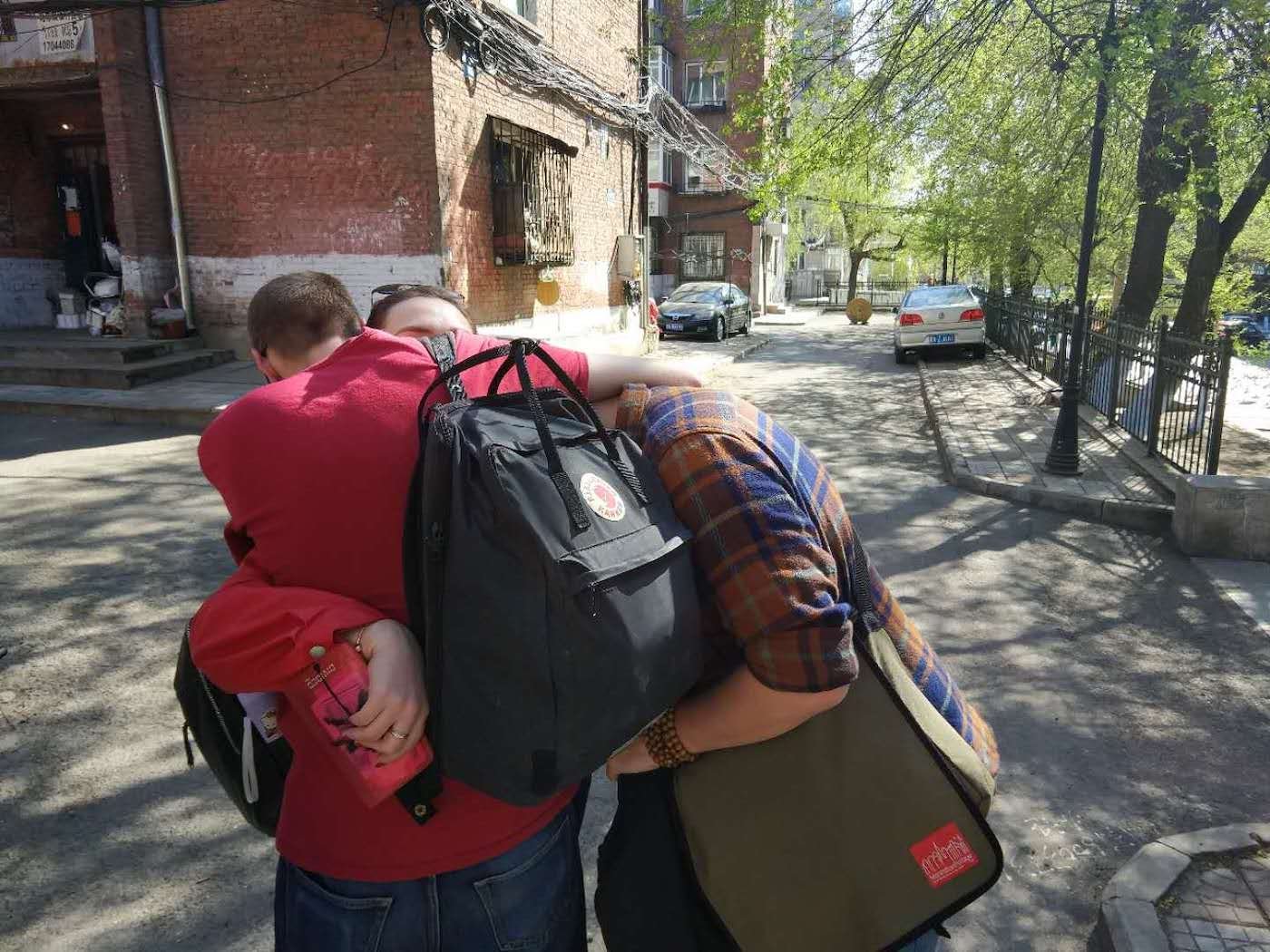Onebag: Fjällräven Kånken Maxi
Note: This post contains Amazon affiliate links. As an Amazon Associate, I earn from qualifying purchases.
Guys, I think I have a problem. It's a bag problem. I love a good bag, and I'm always looking for the perfect one. Ideally, the perfect bag is going to be able to hold everything I need for an extended trip. A "one" bag that doesn't need to be checked when flying. It just makes life so much easier, especially when you fly a lot to, from, and within China where flights are frequently delayed and rushing to your connection is common.
In my quest for the bag, I most recently have tried a true icon - the Fjällräven Kånken. This is the largest version with the unfortunate given name of "Maxi", but it's Swedish so it gets a pass, I guess. As somewhat of a design purist, I absolutely love the classic Kånken. I've had it for almost a year now and used it all around Daqing, as well as on two trans-Pacific flights. Does function hold up to form?
The history of the Kånken
Because I'm a dork, I enjoy looking up the history of companies and the products that I buy from them. The Kånken's history is rooted in simplicity and utilitarianism as only a Swedish product could be. Galvanized by a 1970s statistic showing that 80% of Swedes suffered from some sort of back pain, Åke Nordin developed a new backpack to tackle this problem from a young age. The Kånken began as a schoolbag and was designed to hold a typical amount of supplies and provide strong support that encouraged a straight back and improved posture. The design hasn't changed much since that first bag rolled out in 1978.
“The Kånken began as a schoolbag and was designed to hold a typical amount of supplies and provide strong support that encouraged a straight back and improved posture.”
The minimalist design is timeless.
The Kånken's design is, admittedly, not for everyone. I personally love the boxy design and the front panel that loads directly into one large compartment. It's about as simple as it gets. The main compartment is a respectable 18L, but the bag can unzip near the back for an additional 9L. Some people may find this is all they need, especially if they're digital nomading in Southeast Asia where the weather allows for a wardrobe of tees, shorts, and flip flops. That said, I need more space than this in a year-round bag. Winter gear takes up a lot of room.
The bag is built like a tank out of Vinylon F and is relatively light at 500 g (17.6 oz). Dimensions are 41cm x 32cm x 14cm (16" x 13" x 6"), so you're not going to have any trouble whatsoever getting it on a plane. Speaking of, this Kånken has an awesome feature that allows you to draw up the back straps and button them up so that the straps hug the body of the pack closely - a very convenient feature when storing your luggage overhead or in the unlikely event that you'll need to check it. I also like the reflective logo and the strip near the bottom of the pack. This is great if you're going to do any road-walking or just any walking at all on Asian streets.
The handles at the top also clasp together, which keeps them out of the way while traveling as well as provides a small theft deterrent (the bag is harder to unzip). The last thing I should mention is the expandable zip at the back of the pack. This expandable section is actually a different compartment altogether. It's going to be best suited for clothes and other squishy things that won't jab you in the back. You could also use this as a laptop compartment, as long as you've got some padding for it, like a light jacket or hoody. I prefer packing light enough that I won't need this compartment, but it does provide some peace of mind.
What can it hold?
I often find that just providing a number figure for the pack's volume is not nearly as helpful as a visual representation of what can be packed into it. In the photos above, you can see what I packed in the Kånken for a 2-day business trip to Beijing. I managed to fit all of this without using the additional 9L. It's important to note that I had an additional slim messenger bag because it's just easier to confine all work-related stuff to that than constantly switching around everything in my pack to prepare for a business meeting. Also, a slim laptop bag is just going to look more professional anyway.
The second caveat is that I packed some things that I definitely didn't need, so factor that in when visualizing how much space this bag offers. My stuff is being moved to a different apartment while I'm on holiday in the States, so I packed a couple of articles of clothing that I would be very bummed to lose, even though there's no way I'm going to be wearing them in the 100°F/100% humidity of North Carolina summers. That said, here's a list of what I packed:
Wool & Prince Button-Down
Icebreaker Merino Crew
SmartWool Merino Crew
PrAna Stretch Zion Shorts
The North Face Running Shorts
Fjällräven Karl Trousers
Bluffworks Trousers
H&M Hoody
Uniqlo Shorts
H&M Tank
Icebreaker Everyday Boxer (2)
Darn Tough Socks
Arcteryx Merino Beanie
Rainbow Sandals
Vogmask Pollution Mask
Eagle Creek Pack-It Cubes (2)
Tom Bihn Spiff Kit
Oral-B Pro 7000 Toothbrush
Braun Series 7-720 Shaver
Seki Edge Clippers
Sea to Summit Dry Bag
Snow Peak Titanium Spork
SIM Cards
LOOP & Apple Adaptors
Playing Cards
Black Diamond Positron Carabiner
Ray Bans
Keys
Betel Nut (good for a boost after traveling)
The Kånken is comfortable but ventilation is lacking.
I have to say, I was quite worried upon seeing the Kånken for the first time. It's essentially wearing a box on your back and the straps look quite thin, comparatively. However, there is a generous amount of padding on them, and I had no trouble with them cutting into my shoulder or anything - especially important since I've recently torn a rotator cuff. There is also padding in the back, in the form of a removable foam pad. It does the job, but it's not exactly form-fitted for the back and the ventilation is poor. At times it can feel like having a straight plank against your back.
It's important to note that I've only carried a full load in this pack through airports and from the Beijing subway to my hostel. Your experience may certainly vary if you're taking a long walk with some weight in this pack, and my suspicion is that the Kånken is not the most comfortable option for travelers who enjoy long walks.
This bag could survive a nuclear bomb.
Where the comfort may be a little shaky (IMO) the durability is not. The material used - Vinylon F - is stiff, strong, and naturally waterproof. If the fibers get wet, they expand to block out further moisture. I can't see a situation in which the body of this bag rips or tears unless you get into a knife fight or something. Then you'll be happy to have your Kånken for an effective shield. Interestingly enough, the creator of Vinylon defected to North Korea in 1950 and the material has since become their national fiber. So, there's that.
Should you buy it?
As with any bag, it depends on your situation. If you truly want to "one-bag" it, I'm not sure if this is the best choice. There's certainly enough room for a long summer holiday, but you might need more room if you're also working out of this bag. It has served me well as a bag to knock around, throw some things in, and crash at my friend's house for a weekend. For me, a dedicated one-bag needs to have more room than this and be more comfortable than this.
That's why I've recently bought a Kelty Redwing 44. It seems like the best of both worlds. It's incredibly spacious and comfortable enough to hit the trail with. The Kånken may be good for some and great for just an everyday bag, but for those frequent flyers that need more space, you can bet I'll be doing another write-up for the Redwing 44 once we get acquainted. ◉
Written by Seth Barham










